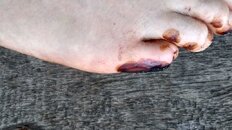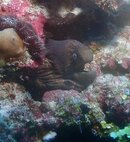scubajunky17
Contributor
I have to say, it made my wound scab straight away and also seems waterproof, went for a snorkel and it was all intact at the end.
It's like it forms a protective crust over the wound.
My toe is looking good, no swelling really and no sign of infection so far, confident that this stuff will do the trick for me.
It's like it forms a protective crust over the wound.
My toe is looking good, no swelling really and no sign of infection so far, confident that this stuff will do the trick for me.
It is similar in that it disinfects, cleans wounds and is redbut very different in the way it works as it forms a scab almost immediately, seems to massively speed up the healing process and is full of chinese herbal extracts (who knows whether they are all good or bad?) .
Many of the locals in Indo use it and surfers (who constantly pick up reef cuts particularly on their feet) have been using since time immoral, I first used it in the early 90's and was annoyed when i could not find it in Europe as it was top of my first aid pack when surfing and diving around SE Asia in the 90's





